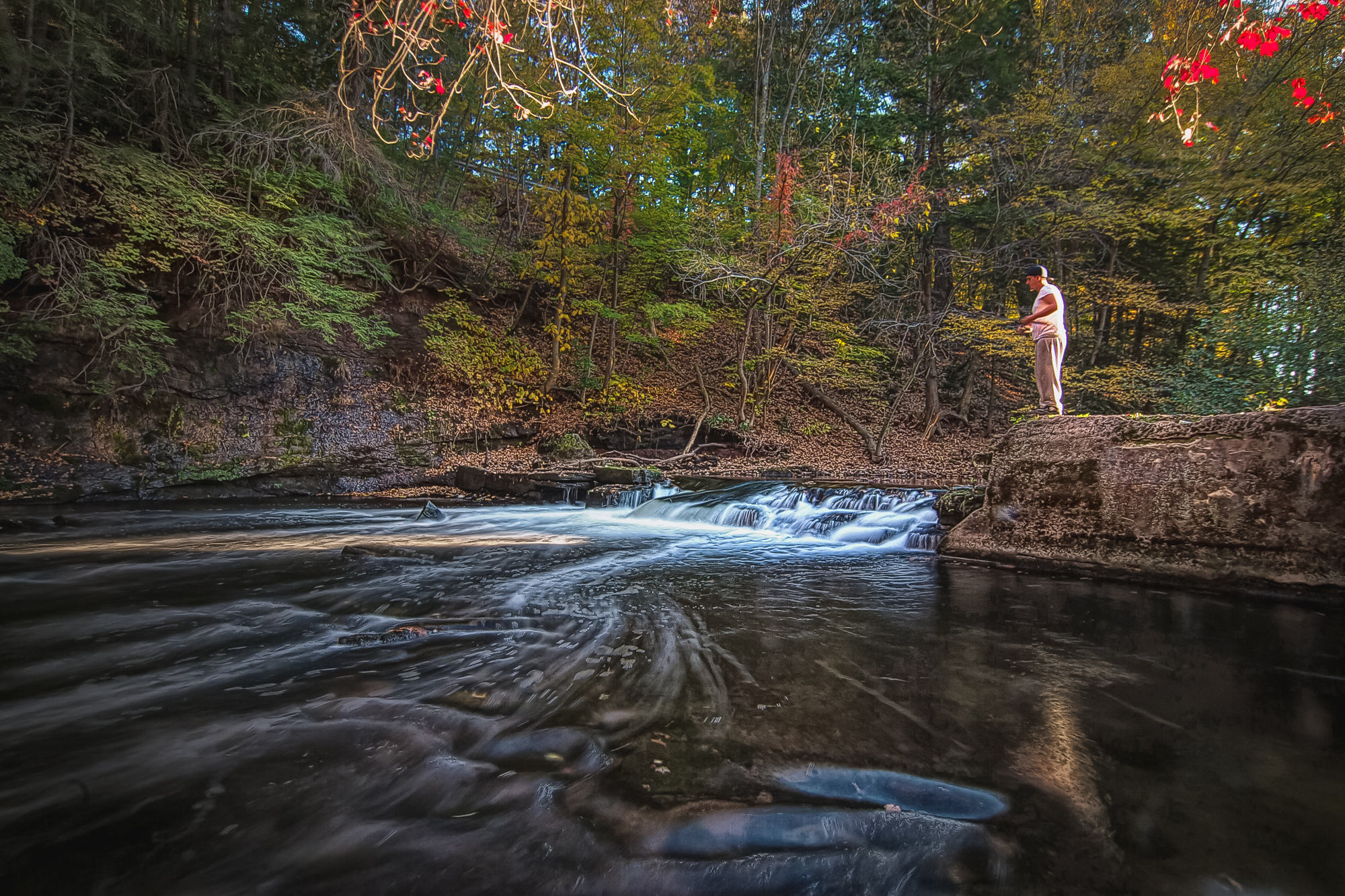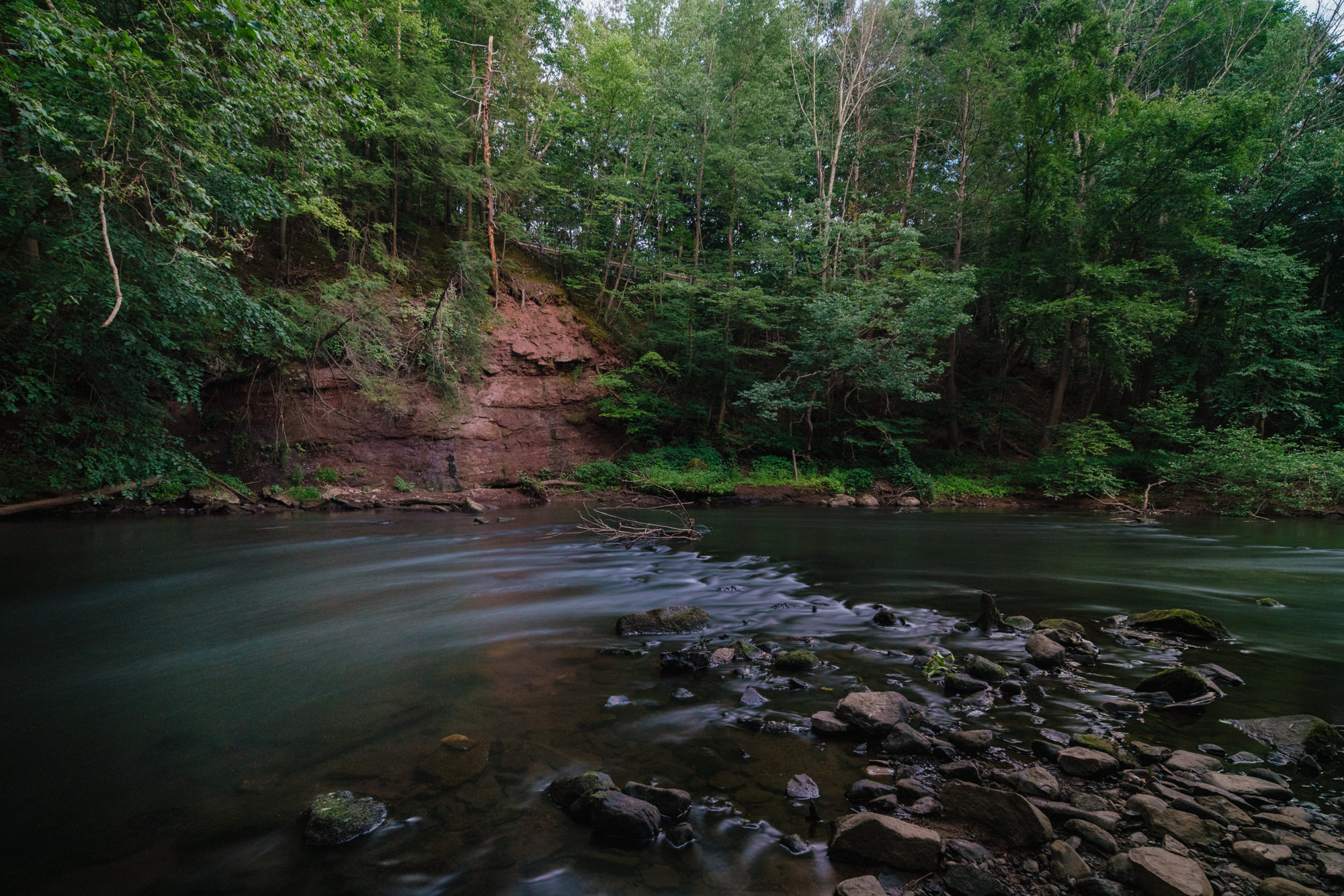Free to Flow
Pipe and dam removal restore Quinnipiac’s current


In early April 2019, backhoes and excavators descended on the River in Meriden, dismantling an exposed but obsolete water line. The pipe was the last barrier preventing migratory fish from swimming upstream to their spawning grounds of days gone by. Its removal was part of a multi-year collaborative effort that included dismantling two dams in 2016: the Carpenters Dam in Meriden and the Clark Brothers Dam in Southington. The result: 16 miles of river opened for unimpeded travel, a benefit for herrings and humans alike.
The newly opened upstream gives the river’s fin-bearing residents — such as shad, herring and other migratory fish — access to habitat critical for growing their population. And for those voyagers wielding paddles, it means an end to tricky portages during canoe or kayak excursions of the upper Quinnipiac. And as an added bonus, the work was complete just in time for QRWA’s annual Downriver Classic boat race.
New England is replete with dams, and Connecticut waterways have more than 5,000. According to a dam inventory in 1983, 109 dams have been constructed on the Quinnipiac River and its tributaries. Many of Connecticut’s dams no longer provide economic benefit and have fallen into disrepair. These outdated dams prevent fish movement, impede recreational access, pose flooding risks, and block natural sediment from flowing downstream to replenish estuaries and beaches.
In recent years, the U.S. Fish and Wildlife Service and Connecticut Fund for the Environment/Save the Sound have targeted the removal of dams in New Haven and Mystic, joining a trend across the nation to remove dams that cause environmental damage.
A 2011 U.S. Fish and Wildlife Service assessment showed that every mile of river opened can contribute more than $500,000 annually in social and economic benefits once fish populations are at their full productivity.
Such progress is especially important for a river like the Quinnipiac, whose history is replete with mistreatment. In fact, the project itself was funded by a settlement with the Solvents Recovery Service and Old Southington Landfill Superfund sites, both located in Southington, CT, and both contaminators of the river. When active, these sites leached hazardous wastes including volatile organic compounds (VOCs), polychlorinated biphenyls (PCBs), and metals into the river. Later remediation efforts further injured the river and its wetlands, destroying foraging habitat for fish and birds and rendered millions of gallons of water in the watershed undrinkable.
In the 1980s, a five-year legal battle against the polluters resulted in a damages settlement of approximately $800,000 to restore impacted natural resources. U.S. Fish and Wildlife Service identified dam and barrier removals as an efficient use of the funds.
With the project’s completion, all but three of Quinnipiac’s 38 miles flow freely for the first time in more than two centuries. And while this unhindered current won’t wash away all the abuses the River’s endured, it’s indeed a positive course of action for the Quinnipiac.

